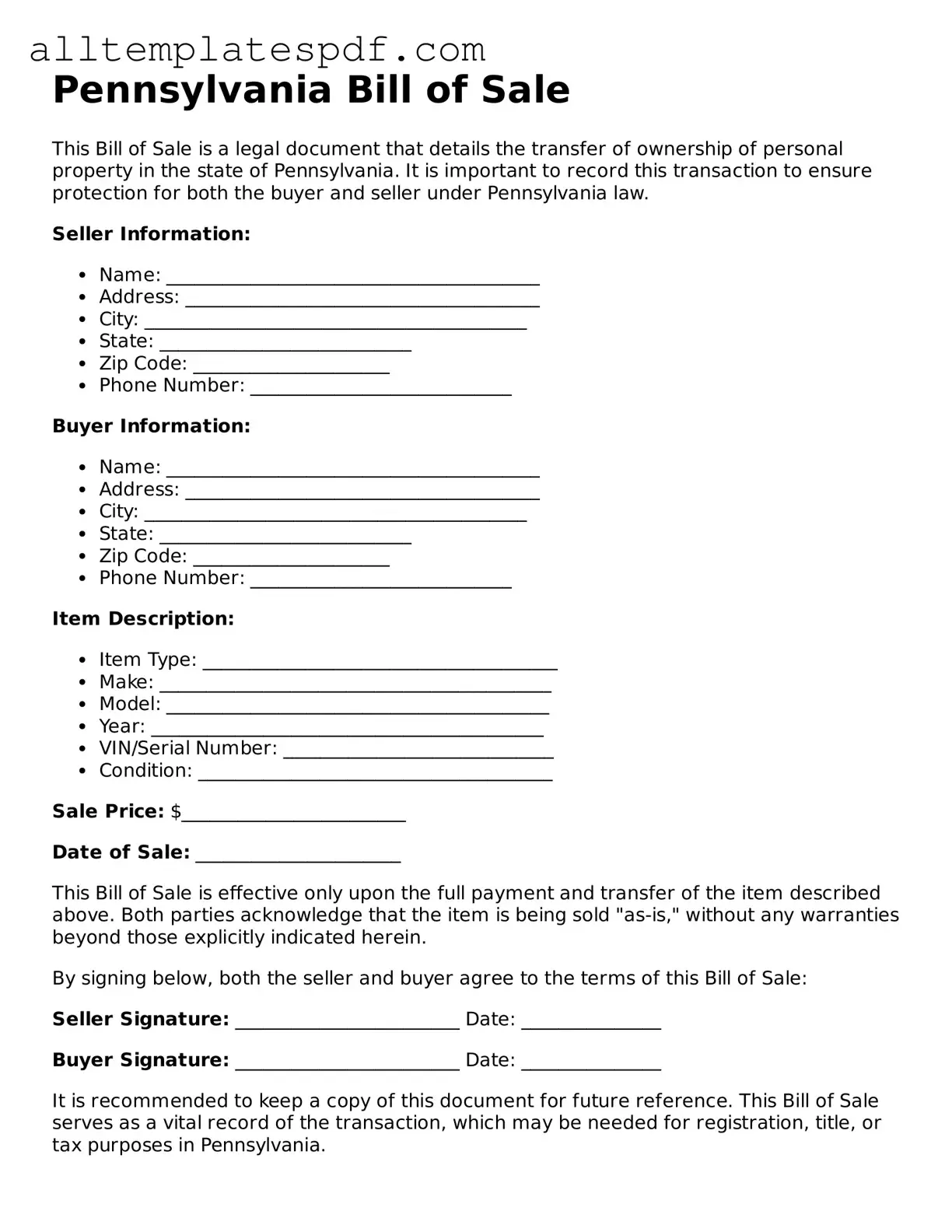Filling out a Pennsylvania Bill of Sale form can seem straightforward, but many individuals make common mistakes that can lead to complications down the road. Awareness of these pitfalls is essential for ensuring a smooth transaction. One frequent error is neglecting to include all necessary details about the item being sold. For example, not specifying the make, model, and year of a vehicle can create confusion and disputes later.
Another mistake is failing to provide accurate identification information for both the buyer and the seller. This includes names, addresses, and contact numbers. Incomplete or incorrect information can hinder the ability to trace ownership or contact parties if issues arise. It is crucial to double-check this information before finalizing the document.
Many people also overlook the importance of signatures. Both the buyer and seller must sign the Bill of Sale for it to be legally binding. Some individuals mistakenly believe that a verbal agreement is sufficient. Without signatures, the document may not hold up in court if a dispute occurs.
Another common oversight is not including the date of the transaction. This date is vital for establishing when ownership changes hands. Omitting this detail can lead to complications, especially if the item is involved in any legal matters later on.
Additionally, people sometimes forget to indicate the purchase price. Leaving this blank can create ambiguity about the value of the transaction, which could affect taxes or future sales. Always state a clear and agreed-upon price to avoid misunderstandings.
Some individuals may also use outdated or incorrect versions of the Bill of Sale form. Laws and requirements can change, so it’s important to ensure that the form being used is current and compliant with Pennsylvania regulations. Using an old form may lead to issues with the sale being recognized legally.
Another mistake is not retaining a copy of the completed Bill of Sale. Both parties should keep a signed copy for their records. This document serves as proof of the transaction and can be essential for future reference, especially if any disputes arise.
Lastly, many overlook the need for witnesses or notarization, depending on the item being sold. While not always required, having a witness or getting the document notarized can provide additional security and validation to the transaction. Taking these extra steps can protect both parties involved.
